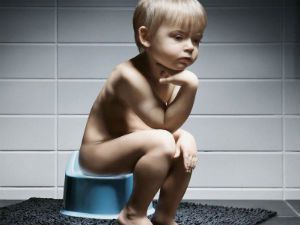The child’s body, especially the baby, because of the imperfections of most organs and systems are very sensitive to any impact, so every mother closely monitors all changes that happen to her baby.
Often the appointment with the pediatrician, we are the parents, the main complaint which is a sudden change in the color of urine the baby.
In order for the doctor to answer the question of why this happened, first of all, he asks some clarifying questions, and only then proceed to the necessary tests.
Dark urine in a child is a symptom that should never remain without attention, after all, may hide serious diseases. If you didn’t change anything in the diet of their child, did not reduce the amount they drink fluids, do not give him any medicines that delay the doctor’s visit is not necessary.
Natural factors
The child’s body is not formed immediately, in order to the organs and systems functioned in full is required for their gradual development. That is why the dose of the drugs in children and adults are different, because the “adults” doses are highly toxic. Also the child’s organism is more sensitive to fluid loss, high temperatures, etc.
When the child the urine becomes dark in color or any other color, it is necessary to exclude the presence of the following reasons.

Use baby medicines, instructions which have reference to the fact that the color of the urinary sediment may vary. It is absolutely safe, because after complete cessation of treatment these medicines, the symptom completely goes away. Among these preparations is to provide vitamin complexes, a number of antibiotic (e.g., Metronidazole) and antimicrobial agents (from the group nitrofuranov).

A fairly common cause of color changes of the urinary sediment of a child becoming vitamins and
Long stay of the child in the sun during the hot summer days, active games, which he actively loses fluid through sweat. If the amount of fluid intake is insufficient, the child’s body is dehydrated, which explains the subsequent coloration of the urine.
Small drinking water throughout the day. As a rule, many children are drinking enough water, it happens only in case of strong thirst. Every mother should see how much her baby is drinking and secretes per day. If he rarely asks to go potty, should give him to drink a variety of fruit drinks, fruit drinks and regular drinking water.
Add in food products like rhubarb, carrot, beet, BlackBerry, blueberry, cherry and others that can directly affect the color of the urinary sediment, since they contain natural dyes that stain not only urine but also feces. If the child drink carbonated water with artificial colorants, then when you change the hue of urine, do not worry – this is normal.
Eating large amounts of products containing artificial dyes may cause changes in the color of urine in a variety of shades
When there is a complete normalization and correction to the above reasons, the urine quickly becomes its natural color.
It is worth saying that in the morning portion of urine is a bit darker, especially if the child is per night and never went to the toilet. During the day the urinary sediment color becomes lighter.
Pathological causes
Different options changes the color of urine may indicate a specific group of diseases, which helps the doctor in the early stages of diagnosis to suspect one or another pathological condition.
The urinary sediment bright-yellow color is a manifestation of the following conditions:
- dehydration on the background of repeated vomiting or diarrhea (infectious diseases of different etiology);
- burn intoxication;
- toxicosis pregnant moderate or severe degree;
- marked fever.
High numbers of the reaction temperature cause rapid dehydration of the child, so you must monitor a sufficient flow of fluid from the outside (excessive drinking).
Brown urine appears when the following serious diseases:
- hemolytic anemia;
- kidney stones;
- cholelithiasis;
- the acute form of glomerulonephritis;
- viral hepatitis;
- toxic damage to liver cells (e.g., mercury vapor or copper).
Black urine can indicate disease such as alkaptonuria. It refers to the innate genetic processes. Its principal signs are pigmentary changes of the skin, weakness, musculoskeletal, multiple kidney stones and a quick darkening of urine when exposed to air.
We should not exclude such a condition as melanosarcoma, which is characterized by the allocation of a special pigmentation substance melanin, in the composition of urine.
The shade of red urinary sediment or the appearance of a visible blood or blood clots observed in these pathological processes, such as:
- the movement of stone in urinary tract (ICD);
- severe pyelonephritis or glomerulonephritis;
- tumours in the kidneys or bladder.
Turbid urine becomes in the presence of a large number of white blood cells, proteins, cylinders, or the squamous cells.
This occurs when the following diseases of the genitourinary system:
- acute cystitis;
- acute pyelonephritis or glomerulonephritis;
- acute urethritis.
The symptoms are worth paying attention to
Not all parents can pay attention to the fact that the urine of their child has acquired a different shade, but there are a number of complaints that will definitely be cause for concern:
- during the act of urination the child becomes cranky and cries;
- there are complaints of pain in different parts of the abdomen (right upper quadrant, the projection of the kidneys or bladder), sometimes the pain is so strong, it forces the child to moan and thrash about in bed (in renal or hepatic colic);
- the child begins to complain of a constant urge to urinate, however, if he goes to the bathroom, it stands out very little urine;
- the baby reduced appetite, the baby refuses to take the breast;
- urine not only becomes a different color, but also an unpleasant smell, sometimes with the naked eye visible blood clots;
- the temperature rises, changing the mood of the child, he becomes listless and apathetic;
- changing the color of the skin and mucous membranes in the child, they become jaundiced;
- cal is lost or becomes less dark.

If the child unreasonably refuses the mother’s breast, then inside his body, there are processes that bother the baby
Principles of diagnosis
During the examination, the doctor pays attention to objective research, which can judge the presence or absence of other pathological symptoms. Mandatory is conducted in deep palpation of the abdomen and pelvis, identify the source of the pain.
If, in addition to changing the color of the urine, the child does not have any other complaints, it is active, the survey is limited to capture the General analyses of urine and blood. If they are found deviations, the range of diagnostic procedures will be expanded.
To explore the urinary composition, its concentration, the presence of pathological admixtures will help the analysis of urine on Nechiporenko and trial of General.
Urinalysis usually not sufficient for accurate diagnosis, therefore, resort to more advanced methods of diagnostics
Be sure to assign biochemical blood determine the level of urea, creatinine and other indicators (as required).
Received the urine sent to the laboratory for further planting and determine the type of pathogen. Also find out the range of antibacterial drugs to which the sensitive infectious agent.
Instrumental examination:
- Ultrasound of the liver, pancreas, kidney, bladder and other (depends on the root cause of the process);
- CT or MRI necessary structures.
Treatment
If we are talking about the dark urine, the cause of which were in violation of drinking regime, you must ensure that the child consumed enough water throughout the day, regardless of its level of physical activity. The parents should control the amount of fluid it secretes.
Recommended to eliminate from the diet foods and drinks with artificial colors, because they not only affect the color of the urinary sediment, but are not very useful for the body.

Treatment of inflammatory processes in the bladder or kidneys is reduced to the prescription of antibacterial agents that are active against the infectious agent.
Change the color of urine in a child of any age require a doctor’s visit and a series of diagnostic procedures
Viral hepatitis is amenable to therapy with antiviral medications and medications that improve the functioning of liver cells.
Stones in the gallbladder and in the organs of the urinary system is dissolved by the appointment of a special medicine and diet. If the therapy is ineffective, then the question of surgical intervention.
Do not panic if your baby’s urine turns dark yellow or has acquired a different hue. This condition is not always indicative of the beginning of the disease, especially if the child behaves as usual and did not complain. In order to completely eliminate the presence of his pathology, must soon be tested in the clinic by place of residence.



